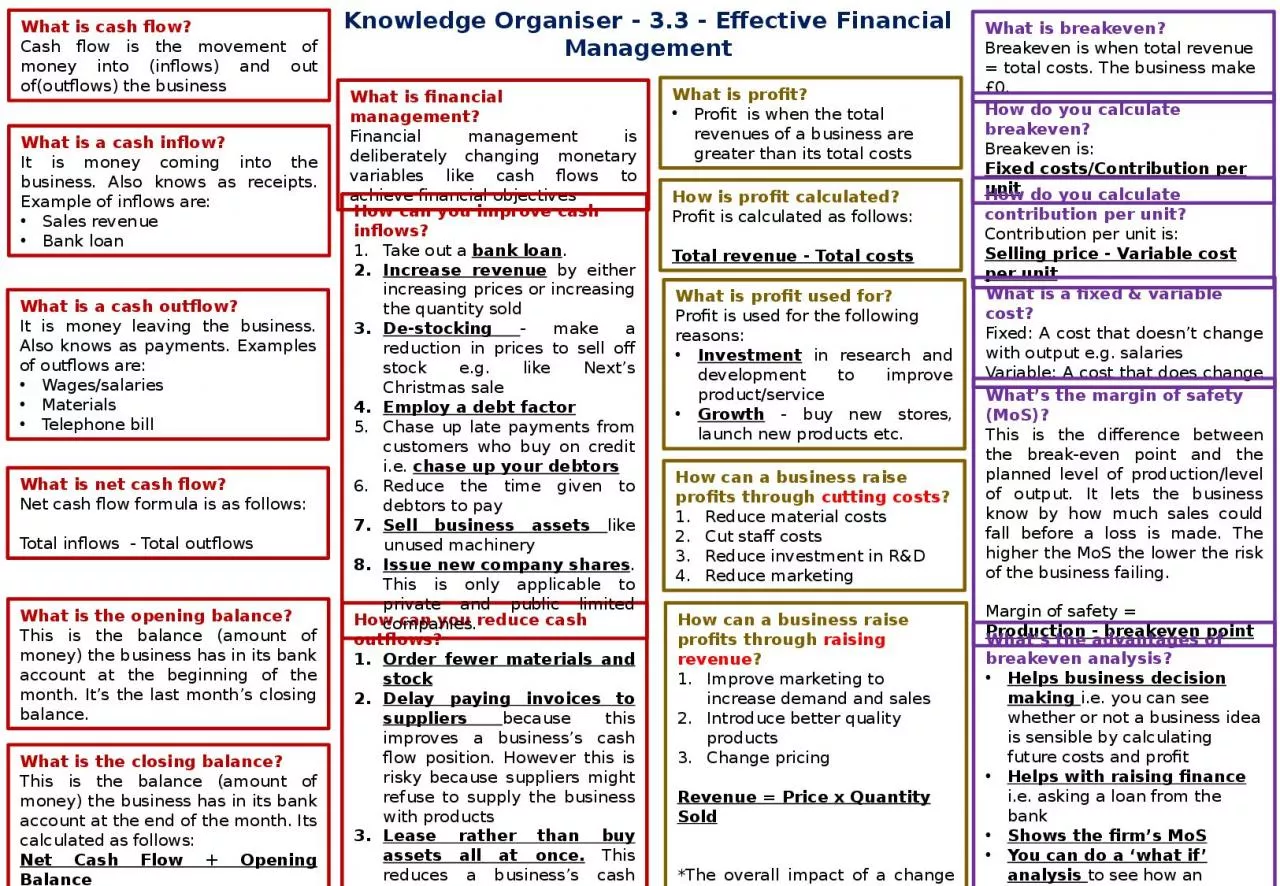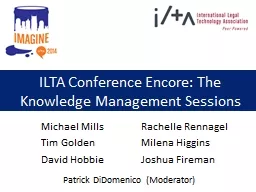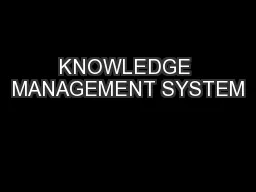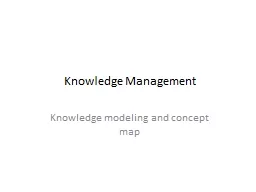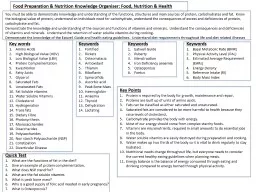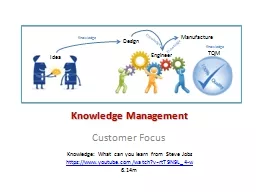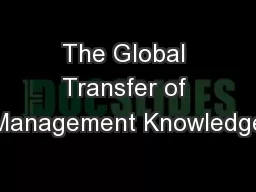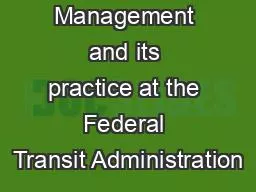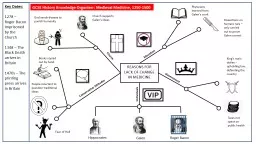PPT-Knowledge Organiser - 3.3 - Effective Financial Management
Author : cappi | Published Date : 2023-11-06
What is profit Profit is when the total revenues of a business are greater than its total costs What is cash flow Cash flow is the movement of money into inflows
Presentation Embed Code
Download Presentation
Download Presentation The PPT/PDF document "Knowledge Organiser - 3.3 - Effective Fi..." is the property of its rightful owner. Permission is granted to download and print the materials on this website for personal, non-commercial use only, and to display it on your personal computer provided you do not modify the materials and that you retain all copyright notices contained in the materials. By downloading content from our website, you accept the terms of this agreement.
Knowledge Organiser - 3.3 - Effective Financial Management: Transcript
Download Rules Of Document
"Knowledge Organiser - 3.3 - Effective Financial Management"The content belongs to its owner. You may download and print it for personal use, without modification, and keep all copyright notices. By downloading, you agree to these terms.
Related Documents

